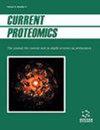Quantitative Proteomics Reveals SOS2-related Proteins in Arabidopsis under Salt Stress
IF 0.5
4区 生物学
Q4 BIOCHEMICAL RESEARCH METHODS
引用次数: 0
Abstract
Soil salinity is a major issue that seriously affects plant growth and cultivated land utilization. Salt tolerance is one of the most fundamental biological processes that ensures plants survival. SOS2 is one of the most important components of the Salt Overly Sensitive (SOS) signaling pathway, which maintains plant ion homeostasis under salt stress. The SOS2-related signaling pathways remain incompletely exploited especially at the proteomics level. In this paper, proteins potentially interacting with and regulated by SOS2 in Arabidopsis were identified. The proteomes of Arabidopsis Wild Type (WT) and SOS2-deficient mutant (sos2-2) exposed to 100 mM NaCl for 6 h were compared, proteins were identified using data-independent acquisition-based quantitative proteomics strategy. A total of 7470 proteins were identified and quantified, 372 Differentially Expressed Proteins (DEP) were detected between WT and sos2-2 mutant under normal condition and 179 DEPs were identified under salt treatment. Functional analysis showed that the DEPs were mainly involved in protein binding and catalytic activity. Among the DEPs under salt stress, the protein expressions of AVP1, Photosystem II reaction center protein A, B, C, and stress-responsive protein (KIN2) were significantly up-regulated. LHCA1, LHCA2, LHCA4, ATPD and ATPE were significantly down-regulated. These proteins were involved in biological processes including: stress response, photosynthesis, transport and heat shock. These results revealed complexity of the functions of SOS2 in maintaining intracellular homeostasis, in addition to its function in sodium homeostasis. Plant salt resistance is not independent but closely related to metabolic processes including photosystem, ATP synthase, transport and other stress resistances.盐胁迫下拟南芥sos2相关蛋白的定量蛋白质组学研究
土壤盐分是严重影响植物生长和耕地利用的重要问题。耐盐性是保证植物生存的最基本的生物过程之一。SOS2是盐过度敏感(Salt oversensitive, SOS)信号通路的重要组成部分,在盐胁迫下维持植物离子稳态。特别是在蛋白质组学水平上,sos2相关的信号通路仍未被完全利用。本文鉴定了拟南芥中可能与SOS2相互作用并受其调控的蛋白。将拟南芥野生型(WT)和sos2缺陷突变体(sos2-2)在100 mM NaCl处理6 h后的蛋白质组学进行比较,采用数据独立获取的定量蛋白质组学策略对蛋白质进行鉴定。共鉴定并定量了7470个蛋白,其中正常条件下WT与sos2-2突变体之间检测到372个差异表达蛋白(DEP),盐处理下检测到179个差异表达蛋白(DEP)。功能分析表明,DEPs主要参与蛋白质结合和催化活性。盐胁迫下的DEPs中,AVP1、光系统II反应中心蛋白A、B、C和应激响应蛋白(KIN2)的表达量显著上调。LHCA1、LHCA2、LHCA4、ATPD、ATPE显著下调。这些蛋白参与了胁迫反应、光合作用、运输和热休克等生物过程。这些结果揭示了SOS2在维持细胞内稳态方面的复杂功能,以及它在钠稳态方面的功能。植物的耐盐性不是独立的,而是与光系统、ATP合酶、转运等代谢过程密切相关。
本文章由计算机程序翻译,如有差异,请以英文原文为准。
求助全文
约1分钟内获得全文
求助全文
来源期刊

Current Proteomics
BIOCHEMICAL RESEARCH METHODS-BIOCHEMISTRY & MOLECULAR BIOLOGY
CiteScore
1.60
自引率
0.00%
发文量
25
审稿时长
>0 weeks
期刊介绍:
Research in the emerging field of proteomics is growing at an extremely rapid rate. The principal aim of Current Proteomics is to publish well-timed in-depth/mini review articles in this fast-expanding area on topics relevant and significant to the development of proteomics. Current Proteomics is an essential journal for everyone involved in proteomics and related fields in both academia and industry.
Current Proteomics publishes in-depth/mini review articles in all aspects of the fast-expanding field of proteomics. All areas of proteomics are covered together with the methodology, software, databases, technological advances and applications of proteomics, including functional proteomics. Diverse technologies covered include but are not limited to:
Protein separation and characterization techniques
2-D gel electrophoresis and image analysis
Techniques for protein expression profiling including mass spectrometry-based methods and algorithms for correlative database searching
Determination of co-translational and post- translational modification of proteins
Protein/peptide microarrays
Biomolecular interaction analysis
Analysis of protein complexes
Yeast two-hybrid projects
Protein-protein interaction (protein interactome) pathways and cell signaling networks
Systems biology
Proteome informatics (bioinformatics)
Knowledge integration and management tools
High-throughput protein structural studies (using mass spectrometry, nuclear magnetic resonance and X-ray crystallography)
High-throughput computational methods for protein 3-D structure as well as function determination
Robotics, nanotechnology, and microfluidics.
 求助内容:
求助内容: 应助结果提醒方式:
应助结果提醒方式:


